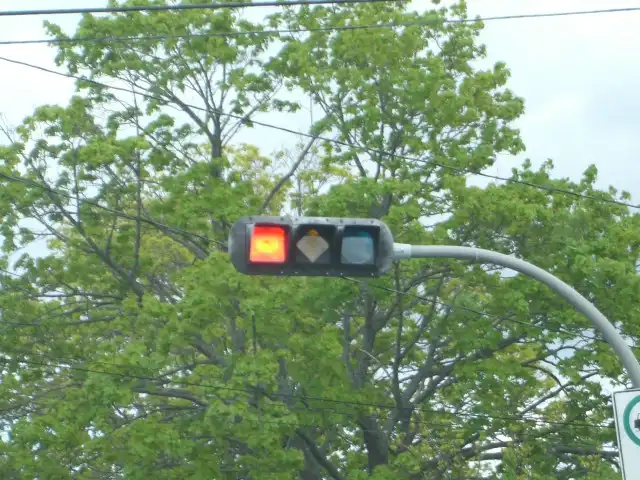How Colorblind-Friendly Are Traffic Signals Across the U.S.?
Driving as a colorblind individual in the U.S. is more manageable than many might think. Most traffic signals rely on position rather than color alone, allowing colorblind drivers to safely navigate roads. In addition, advances in traffic light design and support systems make it easier for colorblind drivers to interpret signals correctly.
Various states have implemented colorblind-friendly traffic light designs that enhance safety for all drivers. These improvements, combined with strategies for both daylight and nighttime driving, ensure that colorblind individuals can drive with confidence. Practical resources and support are available to help those with color vision deficiencies adapt and thrive on the road.
Key Takeaways
- Traffic signals often depend on position, aiding colorblind drivers.
- States provide colorblind-friendly traffic light designs.
- Resources exist to support safe driving for colorblind individuals.
Colorblind-Friendly Traffic Light Designs in Each State
Traffic lights can be difficult for colorblind drivers. Some states have implemented colorblind-friendly designs, while others have not yet taken specific measures. Understanding how each state approaches this issue can help colorblind drivers navigate roads more safely.
State-by-State Traffic Light Design
| State | Colorblind-Friendly Design | Gaps Identified |
|---|---|---|
| Alabama | Standard traffic lights (no specific colorblind design). | No shape or symbol-based signals for colorblind drivers. |
| Alaska | New Flashing Arrow Signals | New specific measures for colorblind individuals. |
| Arizona | Some intersections use LED signals with symbols (e.g., “STOP” or “GO”). | Limited implementation; not statewide. |
| Arkansas | Standard traffic lights. | No specific measures for colorblind individuals. |
| California | Testing shape-based signals (e.g., triangles for red, circles for green) in pilot programs. | Not yet implemented statewide. |
| Colorado | Standard traffic lights. | No specific measures for colorblind individuals. |
| Connecticut | Uses consistent positioning Standard traffic lights. | No additional measures like shapes or symbols. |
| Delaware | Standard traffic lights. | No specific measures for colorblind individuals. |
| Florida | Some intersections use LED signals with symbols (e.g., “STOP” or “GO”). | Limited implementation; not statewide. |
| Georgia | Standard traffic lights. | No specific measures for colorblind individuals. |
| Hawaii | Standard traffic lights. | No specific measures for colorblind individuals. |
| Idaho | Standard traffic lights. | No specific measures for colorblind individuals. |
| Illinois | Testing shape-based signals in urban areas. | Not yet implemented statewide. |
| Indiana | Standard traffic lights. | No specific measures for colorblind individuals. |
| Iowa | Standard traffic lights. | No specific measures for colorblind individuals. |
| Kansas | Standard traffic lights. | No specific measures for colorblind individuals. |
| Kentucky | Standard traffic lights. | No specific measures for colorblind individuals. |
| Louisiana | Standard traffic lights. | No specific measures for colorblind individuals. |
| Maine | Standard traffic lights. | No specific measures for colorblind individuals. |
| Maryland | Some intersections use LED signals with symbols (e.g., “STOP” or “GO”). | Limited implementation; not statewide. |
| Massachusetts | Standard traffic lights. | No specific measures for colorblind individuals. |
| Michigan | Standard traffic lights. | No specific measures for colorblind individuals. |
| Minnesota | Testing shape-based signals in urban areas. | Not yet implemented statewide. |
| Mississippi | Standard traffic lights. | No specific measures for colorblind individuals. |
| Missouri | Standard traffic lights. | No specific measures for colorblind individuals. |
| Montana | Standard traffic lights. | No specific measures for colorblind individuals. |
| Nebraska | Standard traffic lights. | No specific measures for colorblind individuals. |
| Nevada | Some intersections use LED signals with symbols (e.g., “STOP” or “GO”). | Limited implementation; not statewide. |
| New Hampshire | Standard traffic lights. | No specific measures for colorblind individuals. |
| New Jersey | Standard traffic lights. | No specific measures for colorblind individuals. |
| New Mexico | Standard traffic lights. | No specific measures for colorblind individuals. |
| New York | Testing shape-based signals in urban areas. | Not yet implemented statewide. |
| North Carolina | Standard traffic lights. | No specific measures for colorblind individuals. |
| North Dakota | Standard traffic lights. | No specific measures for colorblind individuals. |
| Ohio | Standard traffic lights. | No specific measures for colorblind individuals. |
| Oklahoma | Standard traffic lights. | No specific measures for colorblind individuals. |
| Oregon | Some intersections use LED signals with symbols (e.g., “STOP” or “GO”). | Limited implementation; not statewide. |
| Pennsylvania | Standard traffic lights. | No specific measures for colorblind individuals. |
| Rhode Island | Standard traffic lights. | No specific measures for colorblind individuals. |
| South Carolina | Standard traffic lights. | No specific measures for colorblind individuals. |
| South Dakota | Standard traffic lights. | No specific measures for colorblind individuals. |
| Tennessee | Standard traffic lights. | No specific measures for colorblind individuals. |
| Texas | Some intersections use LED signals with symbols (e.g., “STOP” or “GO”). | Limited implementation; not statewide. |
| Utah | Standard traffic lights. | No specific measures for colorblind individuals. |
| Vermont | Standard traffic lights. | No specific measures for colorblind individuals. |
| Virginia | Testing shape-based signals in urban areas. | Not yet implemented statewide. |
| Washington | Some intersections use LED signals with symbols (e.g., “STOP” or “GO”). | Limited implementation; not statewide. |
| West Virginia | Standard traffic lights. | No specific measures for colorblind individuals. |
| Wisconsin | Standard traffic lights. | No specific measures for colorblind individuals. |
| Wyoming | Standard traffic lights. | No specific measures for colorblind individuals. |
States with Colorblind-Friendly Designs
1.Arizona, Florida, Nevada, Oregon, Texas, and Washington:
Some intersections use LED signals with symbols (e.g., “STOP” or “GO”) or text-based signals to aid colorblind drivers.

Gap: These designs are not yet implemented statewide and are limited to specific urban areas.
2.California, Illinois, Minnesota, New York, and Virginia:
These states are testing shape-based signals (e.g., triangles for red, circles for green) in pilot programs.

Gap: These innovations are not yet standardized or widely adopted.
3.Alaska:
States Alaska has a new design of traffic signals by a flashing yellow arrow,that’s will to help colorblind drivers yield to oncoming traffic and pedestrians.

States with No Specific Measures
The majority of states (e.g., Alabama, Georgia, Ohio, Pennsylvania) use standard traffic lights without any colorblind-friendly adaptations.

Gap: No shape-based, symbol-based, or text-based signals are available, making it harder for colorblind drivers to interpret traffic lights.
Data based on Standard Signs included in the 11th Edition of the MUTCD
How Colorblind People Can Drive Safely During Daylight and Night
Colorblind drivers can use strategies to navigate the roads safely both during the day and at night. Understanding traffic signal positions, using consistent routes, and leveraging technology can help improve their driving experience.
Daytime Driving Tips
Colorblind drivers should pay attention to the positions of the lights in traffic signals rather than their colors. Typically, red lights are at the top, yellow in the middle, and green at the bottom. This visual clue is consistent across the U.S., making it easier to understand traffic signals regardless of color perception.
Using clear road signage is also essential. Drivers can rely on the shape of signs and the text written on them. For example, stop signs are red and octagonal, but the shape and text (e.g., “WALK” or “DON’T WALK”) are identifiable regardless of color vision.
Regularly driving on familiar routes can help in anticipating traffic signals and signs. Practicing defensive driving, such as maintaining a safe distance from other vehicles and being alert, also enhances safety during the day.
Nighttime Driving Techniques
At night, understanding the brightness of lights is crucial. Red brake lights, for example, appear brighter when activated. Tail lights, on the other hand, are less bright. Keeping a safe distance helps in discerning these lights from a distance.
Street lighting can also affect visibility. Using high-beam headlights when appropriate and safe is essential. However, it’s important to switch back to low beams when approaching other vehicles to avoid blinding other drivers.
Reflective road markers and lane dividers can be beneficial. These are often designed to be seen in low light, helping drivers stay within their lanes.
How a Colorblind Person Can Drive Safely In the U.S.
Colorblind drivers face unique challenges on the road, but with the right strategies and tools, they can navigate safely. From wearing specialized glasses to using technology, there are various ways colorblind individuals can adapt to ensure their safety while driving.
Rely on Traffic Light Positioning
Traffic lights in the U.S. are often placed in a standardized vertical or horizontal arrangement. The red light is usually at the top or left, the yellow in the middle, and the green at the bottom or right. Colorblind drivers can rely on this consistent positioning to determine when to stop, slow down, or go. Understanding the traffic light setup is crucial, as it reduces confusion, and the brain can learn to associate light position with actions.
Wear Color-Correcting Lenses
Color-correcting glasses and contact lenses are specially designed to help colorblind individuals differentiate between certain colors. These glasses may not restore normal color vision, but they can enhance color perception, making it easier to identify traffic lights and road signs. Companies have developed lenses tailored for different types of color blindness, providing more personalized assistance. Some states might even recommend them for safer driving. It’s important for individuals to consult with an eye care professional to find the most suitable pair and ensure that they meet any specific needs or regulations.
Look for Shape-Based or Symbol-Based Signals
Some traffic lights and road signs incorporate shapes or symbols to aid those with color vision deficiencies. Triangles often indicate warnings, while octagons symbolize stop signs. Traffic lights in certain areas may use arrows or icons to indicate directions or actions. By becoming familiar with these additional cues, colorblind drivers can enhance their comprehension of signals and reduce reliance solely on color.
Use Technology and Apps
Smartphone apps designed for colorblind individuals can provide real-time traffic updates and color identification. Some apps can also identify colors through a phone camera and translate them into recognizable cues. Additionally, GPS systems with audible directions can help colorblind drivers navigate without relying on color alone. Embracing these technological aids can significantly improve road safety for colorblind drivers.
Advocate for Better Infrastructure
Colorblind individuals can play a role in advocating for more inclusive infrastructure. Encouraging local governments to adopt colorblind-friendly signals, such as incorporating symbols and shapes in traffic lights, can be beneficial. Some states are already experimenting with traffic light designs that include distinct shapes or textures. By supporting these initiatives, the driving environment can become more accessible to everyone.
Educate Yourself and Others
Understanding one’s type of color blindness and its implications for driving is vital. By learning about adaptive strategies and sharing these with others, colorblind drivers can contribute to a more informed community. Workshops or informational sessions can also help raise awareness. Educators and driving schools should consider incorporating colorblind-friendly strategies into their curriculum.
Use Additional Visual Cues
Drivers can use additional visual cues alongside color-based ones. For instance, paying attention to the behavior of other drivers at intersections can provide clues about light changes. Road signs and markings often have patterns or textures that can be utilized as guidance. By training themselves to notice these additional cues, colorblind drivers can enhance their road awareness.
Consider Alternative Routes
Choosing routes with fewer complex intersections or traffic patterns can help minimize stress. Some roads may have newer traffic infrastructure designed with accessibility in mind. Exploring and familiarizing oneself with various routes can make daily driving more manageable. This proactive approach can lead to safer travel experiences for colorblind drivers.
Stay Informed About Local Innovations
Keeping abreast of local developments in transportation infrastructure can benefit colorblind drivers. Some cities and states may implement new technologies or designs aimed at improving safety for drivers with visual impairments. Staying informed allows colorblind individuals to adapt quickly to changes and take advantage of new aids designed to help them drive safer.
Practical Resources and Support
Colorblind individuals can benefit from various resources that help them drive safely. These resources include connections with supportive organizations and guidance from state departments focusing on accessibility.
Organizations and Online Communities
There are numerous organizations that support colorblind drivers and help them access tools and advice. Organizations like the Color Blind Awareness Group provide educational materials and promote technology use, such as specially designed lenses and smartphone apps, which enhance color perception.
Online communities and forums offer advice from experienced drivers on the best practices and gear for safe travel. These platforms are a great place to exchange tips on the challenges colorblind drivers face and ways to overcome them, such as using traffic light filters and memorizing the order of signals.
State Departments and Accessibility Resources
State departments of motor vehicles often provide resources on driving accessibility for colorblind individuals. Some states offer specific guides highlighting adaptive technologies and legal requirements. These guides ensure that drivers are aware of any necessary precautions or modifications needed for safe driving.
Accessibility resources can include testing accommodations and real-time color assistance tools, which are useful in day-to-day driving scenarios. Being informed about these resources equips colorblind drivers to handle challenges effectively, ensuring a safer driving experience for everyone on the road.
Conclusion
Driving as a colorblind individual in the U.S. can be challenging, but with the right strategies and awareness, it’s possible to navigate the roads safely. By understanding which states have implemented colorblind-friendly traffic light designs, adapting to daylight and nighttime driving conditions, and following practical tips, colorblind drivers can confidently take the wheel. Additionally, advocating for better infrastructure and supporting innovative solutions will help create a more inclusive driving experience for everyone.
Data Sources:
NHTSA – Traffic Safety For Colorblind








